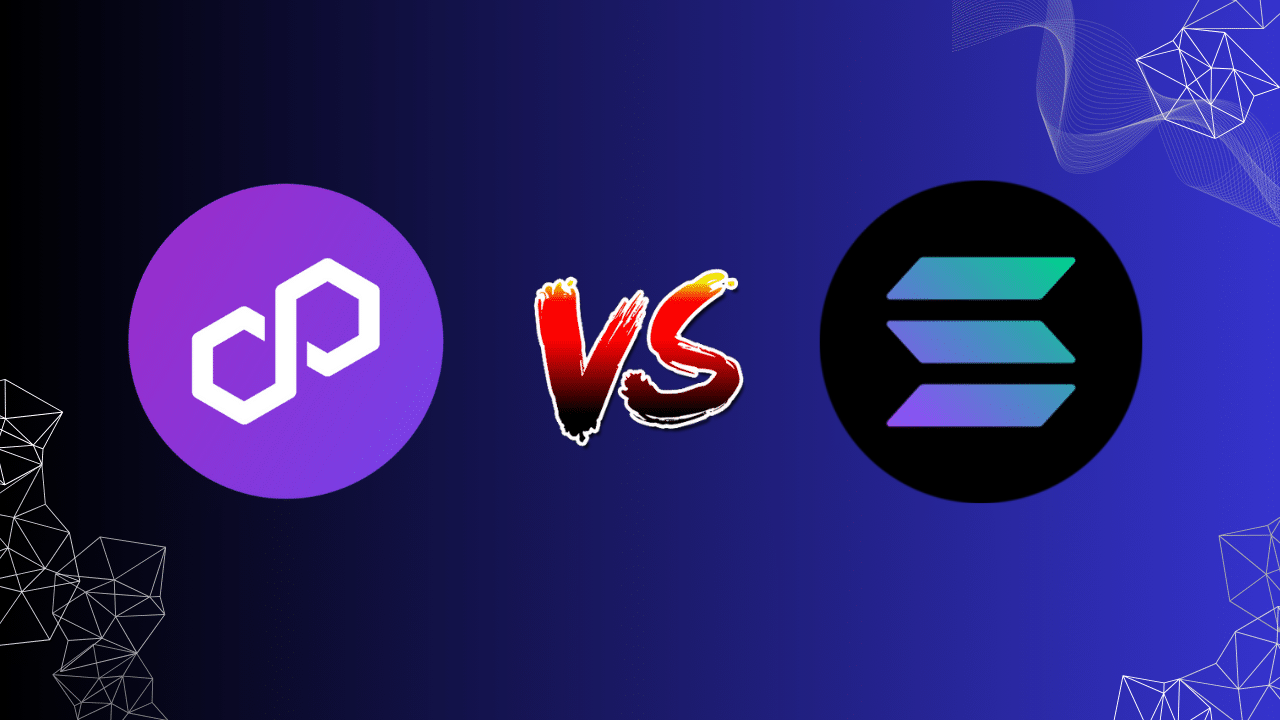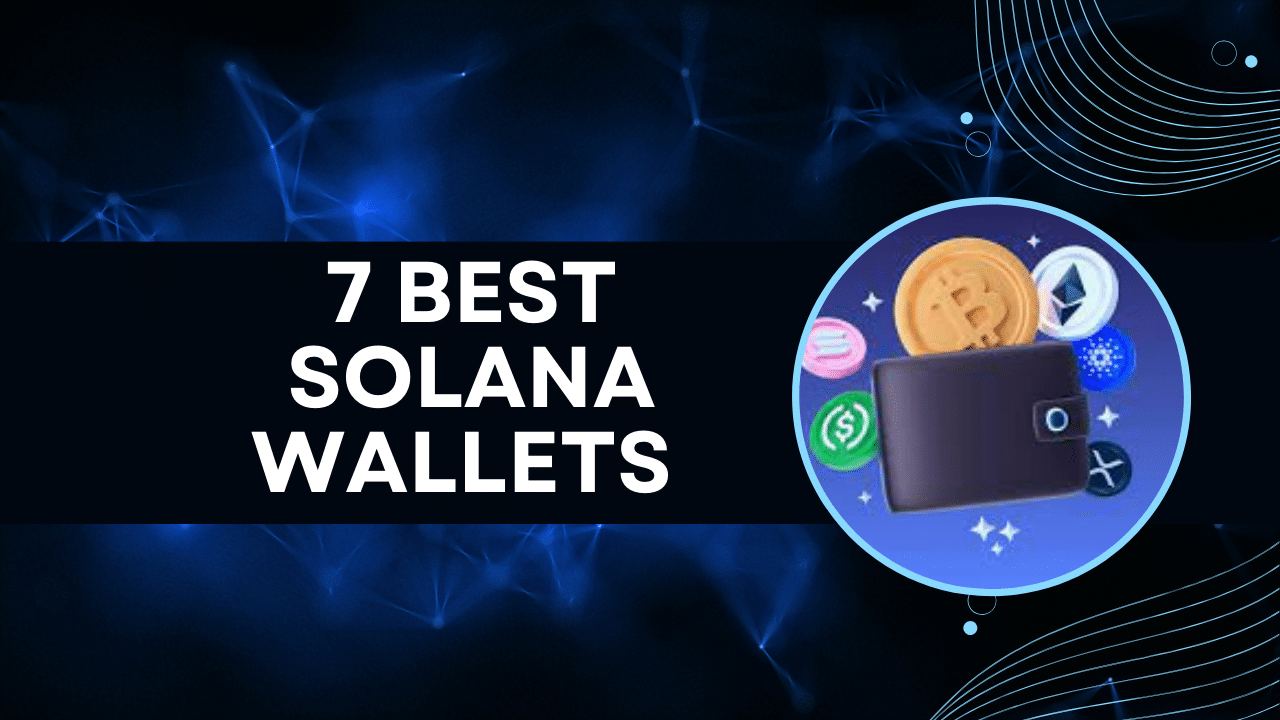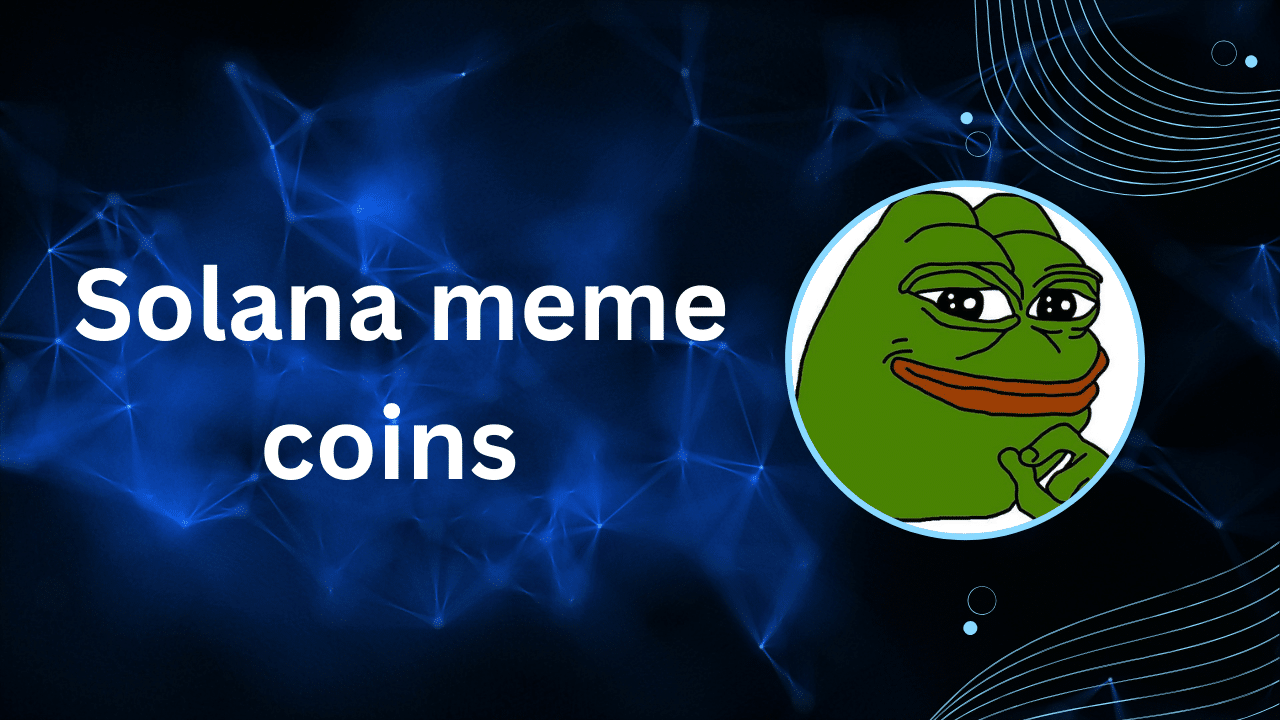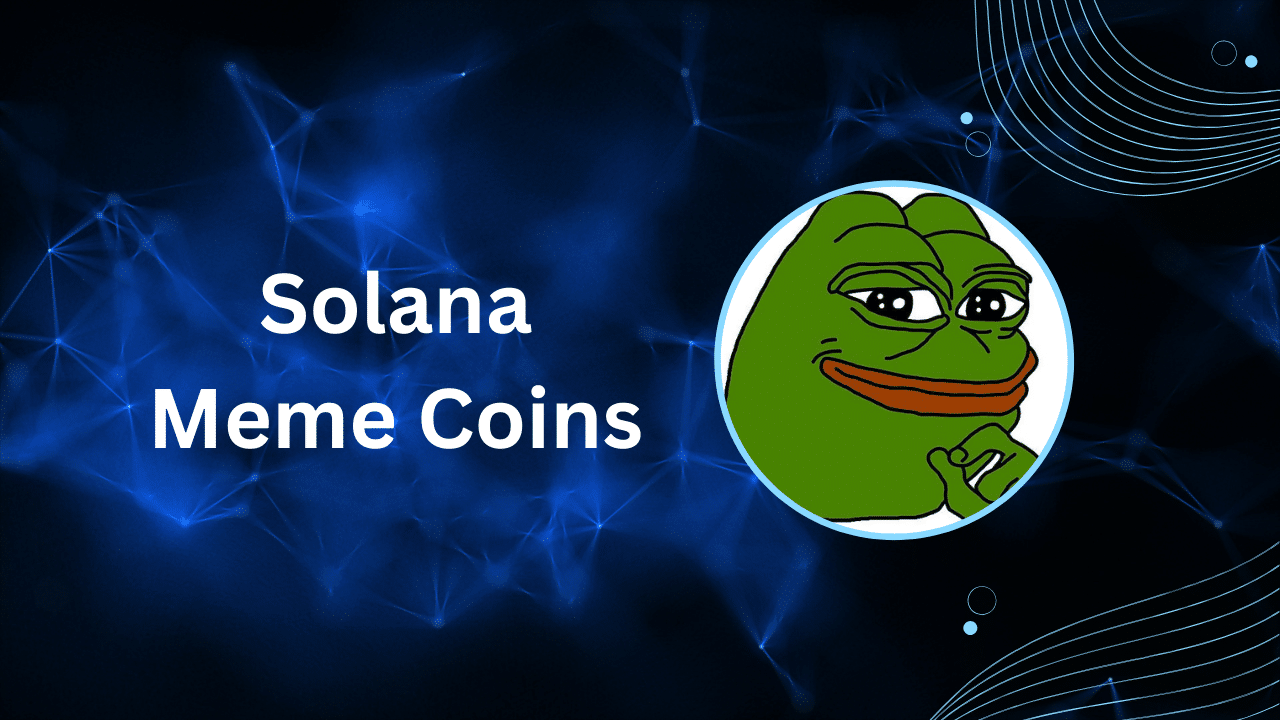Contents
|
|
Blockchain technology, along with blockchains, has gained significant attention in recent years, with platforms like Polygon vs Solana emerging as key players in the crypto market. These platforms have contributed to the growing popularity of cryptocurrencies and have made a significant impact on the cryptocurrency industry. Understanding the differences between blockchains and cryptocurrencies is crucial for anyone looking to capitalize on the benefits and opportunities in the crypto market.
As industries across the globe increasingly embrace blockchains and cryptocurrencies, trading virtual assets and earning rewards in the crypto space have become common practices. Smart contracts play a crucial role in facilitating these transactions. Polygon, a blockchain platform, is known for its scalability and low transaction costs, making it an ideal choice for developers building decentralized applications (dApps) on the ethereum blockchain. With Polygon, developers can enjoy a seamless experience while leveraging the benefits of blockchain networks. On the other hand, Solana, a blockchain platform, stands out with its high-speed main chain and efficient leader schedule algorithm, making it an attractive option for those seeking fast and secure transactions on blockchain networks. Solana offers a compelling alternative to traditional blockchain development, such as the ethereum blockchain.
By delving into the unique features of both cryptocurrencies, Ethereum and developers, we aim to provide you with valuable insights that can help you make informed decisions when navigating the world of blockchain technology and network.
Contents
What is Polygon?
Overview of Polygon
Polygon is a Layer 2 scaling solution for Ethereum blockchain networks, designed to address the scalability issues faced by the Ethereum network. It provides a platform for faster and more efficient transactions using cryptocurrencies on a single chain. It aims to improve transaction speed and reduce fees on blockchain networks, including cryptocurrencies, while maintaining compatibility with existing Ethereum infrastructure. The platform achieves this by optimizing block time.
How Polygon improves scalability, security, and interoperability
One of the key challenges faced by the Ethereum blockchain network is its limited scalability in the crypto space. The platform operates on a single chain, which can hinder its ability to handle large volumes of transactions efficiently. With the growing popularity of crypto trading on the Ethereum blockchain, the network experiences congestion, causing delays in transaction times and increased fees. This is due to the increasing number of users and transactions on the protocol. Polygon addresses the scalability issue by providing a Layer 2 blockchain solution that operates alongside the Ethereum mainnet network using its own crypto protocol.
By leveraging sidechains and other scaling techniques, Polygon enables faster and more efficient transactions on the Ethereum blockchain trading network protocol. It achieves blockchain trading by processing most of the transactions off-chain and only periodically settling them on the Ethereum mainnet network. This approach significantly reduces congestion on the blockchain network, resulting in faster confirmation times and lower transaction costs for ethereum trading.
In addition to scalability improvements, Polygon also enhances security.
What is Solana?
Solana is a high-performance blockchain platform that aims to address the scalability and speed limitations of traditional blockchains, including ethereum. Solana offers a more efficient and faster network for transactions and smart contracts. The blockchain network Ethereum is specifically designed to handle large-scale decentralized applications (dApps) and provide fast transaction processing with low fees.
Scalability, Speed, and Low Transaction Fees
One of the key features that sets Solana apart is its focus on scalability in the blockchain network, particularly in relation to ethereum. Traditional blockchains, including ethereum, often struggle with handling a large number of transactions simultaneously, leading to congestion and slower processing times. Solana addresses the issue of transaction processing by utilizing a unique architecture that leverages blockchain technology, specifically the Ethereum blockchain, which allows for parallel transaction processing. This means that multiple transactions can be executed on the blockchain at the same time, resulting in faster confirmation times on Ethereum.
In addition to impressive speed capabilities, Solana also excels in scalability with its use of blockchain technology. The platform can process thousands of transactions per second, making it one of the fastest blockchain networks available today. This high throughput blockchain enables real-time interactions and enhances user experience across various applications built on Solana.
Features, Pros, and Cons of Solana, Polygon, and Ethereum
Scalability, Security, and Transaction Speed Comparison
When evaluating blockchain technology, it is crucial to factor in key features such as blockchain scalability, security, and transaction speed. Let’s compare Solana, Polygon (formerly Matic), and Ethereum in terms of their blockchain technology.
Scalability:
-
Solana: Solana is known for its high scalability. It utilizes a unique approach called Proof of History (PoH) in the blockchain to achieve fast confirmation times without compromising decentralization. With blockchain and PoH, Solana can handle up to 65,000 transactions per second (TPS), making it an excellent choice for applications that require high throughput.
-
Polygon, also known as Matic, is a block built as a Layer 2 scaling solution on top of the Ethereum network. It aims to enhance Ethereum’s scalability by utilizing sidechains or “commit chains” to block.
Scalability
Scalability is a crucial aspect of blockchain networks, as it determines their ability to handle increased network activity and accommodate a large number of users. Both Polygon and Solana have implemented scaling solutions to address the scalability issues faced by blockchain networks.
How Polygon Addresses Scalability Challenges
Polygon, formerly known as Matic Network, offers a scaling solution that aims to enhance the capacity of Ethereum, one of the largest blockchain platforms. It achieves this by creating an additional layer on top of Ethereum’s main block chain called a “sidechain.” This sidechain acts as an independent network that can process transactions more quickly and efficiently than the main Ethereum block chain.
By utilizing sidechains, Polygon enables faster transaction processing times and significantly reduces network congestion by blocking unnecessary data. This allows users to experience quicker confirmations and lower fees compared to using the Ethereum main chain alone. With the use of this block, users can enjoy faster confirmations and reduced fees when compared to solely relying on the Ethereum main chain.
Security
Security is of utmost importance. Both Polygon and Solana have implemented various security measures to block protect user assets and ensure the integrity of their blockchain networks.
Consensus Mechanisms
One key aspect of blockchain security lies in the consensus mechanism employed by each platform. Polygon utilizes a Proof-of-Stake (PoS) consensus mechanism, while Solana employs a unique consensus mechanism called Proof-of-History (PoH) to block the creation.
-
Polygon’s Proof of Stake (PoS) algorithm selects validators for each block based on the number of tokens they hold and are willing to “stake” as collateral. This system incentivizes validators to act honestly since they would lose their stake if they engage in malicious activities.
-
Solana‘s PoH: In contrast, Solana‘s PoH uses a cryptographic clock that timestamps each transaction and ensures a linear history of events. This mechanism adds an additional layer of security by preventing malicious actors from manipulating the order or time of transactions.
What is the difference between the tokenomics of Polygon and Solana?
Polygon and Solana have different tokenomics models that influence their respective ecosystems. Here are some frequently asked questions regarding the tokenomics of Polygon and Solana:
How does the tokenomics of Polygon work?
Polygon’s tokenomics revolves around its native token, MATIC. MATIC is used for various purposes within the Polygon ecosystem, such as paying for transaction fees, participating in network governance, and staking for rewards. As more transactions occur on the Polygon network, the demand for MATIC increases, potentially driving its value higher.
What are the benefits of holding MATIC tokens?
Holding MATIC tokens can provide several benefits. Firstly, MATIC holders can stake their tokens to secure the network and earn rewards in return. Additionally, MATIC holders have voting rights in the governance of the Polygon ecosystem, allowing them to participate in decision-making processes. Furthermore, as the adoption of Polygon grows, the demand for MATIC tokens may increase, potentially leading to price appreciation.
How does the tokenomics of Solana differ from Polygon?
Solana’s tokenomics is centered around its native token, SOL. SOL is primarily used for paying transaction fees and participating in network governance. However, unlike Polygon’s MATIC, SOL also plays a crucial role in the consensus mechanism of the Solana blockchain. Validators on the Solana network are required to hold SOL tokens as a collateral, ensuring the security and integrity of the network.
What advantages do SOL token holders have?
SOL token holders enjoy several advantages within the Solana ecosystem. Firstly, they can stake their tokens to become validators and earn rewards for securing the network. Additionally, SOL holders have voting rights in the governance of Solana, allowing them to have a say in important decisions. Moreover, as Solana gains more adoption and usage, the demand for SOL tokens may increase, potentially leading to appreciation in value.
FAQs
FAQ 1: What is the difference between Polygon and Solana?
Polygon and Solana are both blockchain platforms, but they differ in several ways. While Polygon focuses on scalability and interoperability, Solana emphasizes high-speed transactions and decentralized applications (dApps).
Think of it this way: if blockchain were a highway, Polygon would be like adding extra lanes to accommodate more traffic, making it easier for different blockchains to connect and communicate with each other. On the other hand, Solana would be like a super-fast race car zooming down that highway, enabling lightning-fast transactions and powering complex dApps.
FAQ 2: Which platform is better for developers – Polygon or Solana?
Choosing between Polygon and Solana depends on your specific needs as a developer. If you prioritize scalability, low transaction fees, and seamless integration with Ethereum’s ecosystem, then Polygon might be your go-to choice.
FAQ 3: Famous projects built on Polygon and Solana
There are several famous projects that have been built on both Polygon and Solana. These projects have gained significant recognition and have contributed to the growth and development of both blockchain networks.
One notable project built on Polygon is Aave, a decentralized lending protocol. Aave allows users to lend and borrow various cryptocurrencies, providing them with the opportunity to earn interest on their holdings or access liquidity. By building on Polygon, Aave benefits from its high scalability and low transaction fees, making it an attractive option for users.
Another popular project on Polygon is SushiSwap, a decentralized exchange (DEX) that allows users to trade cryptocurrencies directly from their wallets. SushiSwap offers a range of features, including yield farming and staking, which enable users to earn additional rewards by providing liquidity to the platform. By leveraging Polygon’s fast transaction speeds and low fees, SushiSwap provides users with a seamless trading experience.
On the Solana network, one famous project is Serum, a decentralized exchange built on Solana’s blockchain. Serum offers fast and secure trading of cryptocurrencies with high liquidity and low fees. It also incorporates innovative features such as order books and cross-chain trading, making it a popular choice among traders.
Another notable project on Solana is Audius, a decentralized music streaming platform. Audius allows artists to upload and monetize their music directly on the platform, without the need for intermediaries. By utilizing Solana’s high throughput and low latency, Audius ensures a seamless streaming experience for its users while empowering artists with greater control and ownership of their content.
These are just a few examples of the famous projects built on both Polygon and Solana. Each project showcases the unique capabilities of these blockchain networks and demonstrates their potential in revolutionizing various industries. As more developers and entrepreneurs recognize the benefits of these networks, we can expect to see even more innovative projects emerge in the future.








